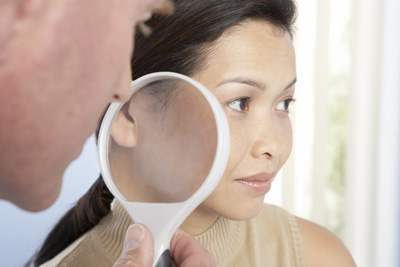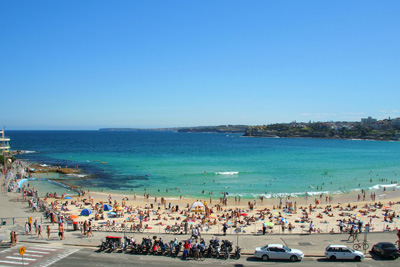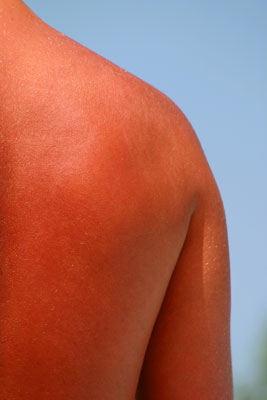Dr John Tsingos Protect Your Largest Organ Interview

Dr. John Tsingos Protect Your Largest Organ Interview
Aussies should appreciate and protect their skin against damage
New research released shows that more than half of the Australian population aged over 40 don't know the skin is the body's largest organ. Every adult over 40 has an average 3.6 kilograms and 2 square metres of skin, yet only a quarter (26%) identified the skin as an organ without being prompted.
Other organs were far better known, for example:
More than eight out of ten (84%) respondents identified the pancreas as an organ
Nearly two-thirds (64%) correctly classified the stomach as an organ
Such low awareness of the skin as an organ has prompted Dr Stephen Shumack, a Consultant Dermatologist from Sydney's Royal North Shore Hospital, and other leading experts to call for Australians to become much more aware of their skin's life-sustaining role.
"Our skin is our first line of defence against damaging sunlight, unsafe chemicals, extremes of temperature, harmful bacteria and other organisms we encounter every minute of every day," Dr Shumack said.
"However, it is also easily damaged and disfigured. Australians not only need to recognise the skin as a vital organ, they need to start protecting it accordingly, so that it functions as well as possible and ages as it should, not before it's time."
Dr John Tsingos, a GP, pharmacist and Emergency Registrar from Sydney, notes that people are more inclined to regard their skin as a priority when there is something wrong with it.
"The value we place on our skin climbs significantly when there is something wrong with it, be it a patch of eczema or psoriasis, a breakout of pimples, an infected cut or a skin cancer," said Dr Tsingos.
He adds that in addition to its vital biological functions, our skin is our lifelong fashion accessory, one that is particularly popular and on regular show at this time of year. "From a cosmetic viewpoint, our skin is the only organ that is regularly visible and, as such, is the one fashion accessory that we will wear day in day out for our entire lives - particularly during the summer." The national survey of 1,200 Australians over 40, undertaken by Kantar Health, also found that:
The national survey of 1,200 Australians over 40, undertaken by Kantar Health, also found that:
In terms of overall importance to the body, the skin only ranks equal sixth behind the heart, lungs, liver, brain, stomach and kidneys.
Awareness of organs is generally higher amongst women, but men are more likely to recognise the skin as an organ.
Most Australians over 40 (59%) believe that more than anything else, our skin serves to protect us.
Less than one in four (22%) identified the skin's role in temperature regulation.
Only a meagre 3% of respondents highlighted the skin's role as a sensory organ.
Interview with Dr John Tsingos
Dr John Tsingos is a Sydney based GP with a specific interest in skin and dermatology.
Question: Were you surprised that more than half of the Australian population aged over 40 don't know the skin is the body's largest organ?
Dr John Tsingos: Actually no I was not surprised that people don't think about the skin as an organ; the general population thinks of the heart, kidneys and liver as the largest body organ because they're the things that generally go wrong. Very few Australians know that the skin is the biggest organ which is why we have started this campaign to raise awareness.
Question: What is the skins role for the body?
Dr John Tsingos: Skin has the biggest multi-factorial purpose in terms of protection: it keeps in the heat as well as keeping it the heat out, the skin protects from environment factors, airborne and liquid chemicals and protects the body from viruses and bacteria. The skin is a protective shell that keeps water in the body as well as out and allows water to leave the body via perspiration as a thermaguard.
Question: Why is it so important to protect our skin?
Dr John Tsingos: Being in such a wonderful Australian environment we spend a lot of time outdoors whether it is watching football, going to the park or even the beautiful beach and we need to protect our skin properly, when outside. The 'Slip Slop Slap' campaign told people to cover their face, chest, back and arms but when we do a skin examination we need to go right down to the grass roots because when you're lying on the beach do you put sunscreen on your feet and between your toes? We need to protect our skin because of skin cancer and the fact that we live in a harsh environment. Our skin is always with us, throughout our whole life and is always on show. The campaign is working because it is telling Australians to look at their Mum, kids, friends and partners to see if they notice any changes. Changes can be darkening, itching or bleeding and if any changes occur it is important you go to the doctor to have it checked out.
Question: Why is the skin so easily damaged?
Dr John Tsingos: Approximately two square meters of skin covers an adult body and the skin weighs almost 4 kilograms. The skin acts as the protective shield to the environment and so many things can attack the body and the skin acts as a shield that has to protect in many ways. Sun can damage the skin in the least likely of ways; once the skin is damaged it can take 20 or even 30 years to develop a skin cancer.
When I was growing up 'brown' or 'tan' was seen as being 'healthy' and now it's hard because everyone who has grown up at the same time as me are having skin cancer therapies. I have half a dozen skin cancer patients tomorrow and I have to do grafts etc. Melanomas can spread easily, you may have seen the advertisement, skin cancer looks like a black blob and as it grows and flakes off it then goes into circulation and this is unfortunate and what we hate to see.
Cancer is hard for not only the person going through it, but for the family and because it is prevalent we want to do something about it. GP's are being education on how to do skin examinations - it is important you start at the top of the scalp and look through the hair and then go all the way to the feet and between the toes.
This campaign is about reeducating to sustain life.
 Question: What methods do we need to take to check our skin?
Question: What methods do we need to take to check our skin?There will also be an education campaign at beaches and sporting events with doctors, nurses and pharmacists who will be teaching everyone what they need to do when they are exposed to the sun.
Skin checks are important and if you are married your partner can check your skin, especially because it is easier for someone else to check your back. If you notice any changes go with your partner to the doctors to get it checked out, it is important to promote health and not put off consultations.
Interview by Brooke Hunter
MORE
- Chiropractic Myths & Truths
- Gerard Fogarty Arthritis and Knee Replacement...
- Kym Ellery The ELLERY Eyewear Collection Interview
- Dr Ross Walker The Real Modern Killers Interview
- Shelly Horton Hay Fever Help Interview
- Sebastian VanVeenendaal Royal Rehab's Beach...
- Abigail Koch Family Private Health Insurance...
- Monique Cashion Organic Awareness Month Interview
- Dr Bill Harris Omega-3s Interview
- The Top Ten Health Myths Busted
- Professor Bolin IBD Management a Life-Long...
- Anthia Koullouros Best Cold and Flu Defence...
- Leprosy in NSW
- Julie-Anne Mitchell Go Red for Women Healthy...
- Insight into Chronic Disease Hospitalisations...
- Jeff Chan Mobile Phone Allergies Interview
- How to Conquer Bad Winter Health Habits
- Bad Cholesterol Behind Cancer Spreading In Body
- New Screening Test Recommended To Help Prevent...
- Support For The Rural Nurse Workforce A...
- Kathy Nielsen Ovarian Cancer Australia National...



